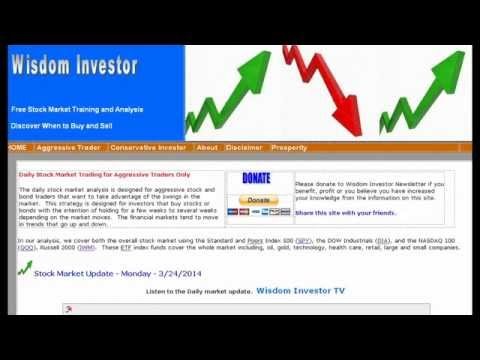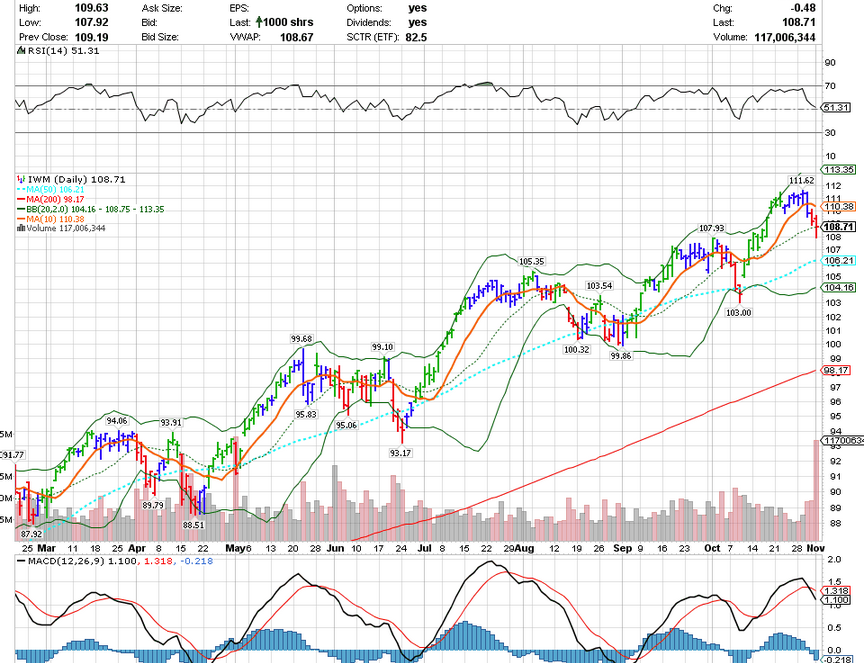Selling Premium As Small Caps Play Catch Up (SPY IWM)
Post on: 7 Июль, 2015 No Comment

In our recent article we pointed out a divergence between the small cap Russell 2000 and the S&P 500. Small cap fell at a faster rate than the S&P 500 creating the divergence and boosting implied volatility. However, the divergence has narrowed while the Russell re-gained its footing in line with our recent analysis. Using Elliott Wave we have defined our trade levels and will move into a long trade by selling the elevated volatility in the options market.
In our article on August 1st, we discussed the small cap Russell 2000 index’s relative underperformance compared to the S&P 500. This attracted much market attention as many analysts suggested the stock rally was doomed as a result of the small caps divergence to the large caps. Through our analysis, we predicted the divergence between the S&P and the Russell would begin to re-align, and also made the case that the impressive bull market in equities is still intact and is set to resume the uptrend.
Since then, the S&P / Russell relationship has begun to re-align, and the overall markets have begun to recover as expected. We will take a look at the current position of the Russell 2000 as well as the broader markets and show you our next move in the markets.
In the prior article, we described calculation of an instrument ratio to gauge relative strength or weakness between two markets. We calculated the Russell 2000 ETF “IWM ” and the S&P 500 ETF “SPY ” ratio by dividing IMW price by the SPY price to arrive at a ratio of 0.5700. Through technical analysis, we projected the ratio was in fact at support and was set to move higher. In other words, the Russell’s relative underperformance to the S&P was about to end and the relationship would move back toward normal levels. Using the closing prices on August 12 th. of IWM $112.57 and SPY $193.53, we have a new ratio of 0.5800. The ratio has moved higher from the 0.5700 level in the article two weeks ago, as expected. Granted this is not a huge move as we’re targeting a move back above the 0.6000 level, but the fact that the ratio is moving higher has important implications to the broader markets. The small caps are playing catch up and with the Nasdaq strength in recent sessions, despite global tensions and poor European economic data, we see the S&P moving to 2000 in coming weeks and months.
Moving to analysis of the Russell 2000 and IWM, we have overlaid the IWM price shown on the left scale with the Russell 2000 index on the right scale. Since the August 1 st article, we have updated our Elliott Wave analysis to reflect the current price structure. As a review, Elliott Wave analysis is a pattern and ratio recognition methodology rooted in classic Dow Theory. Elliott Wave identifies 5 phases of a higher degree completed market trend; 3 trend waves and 2 corrective waves. We see IWM tracing out an Elliott triangle. which is one of the corrective waves within the higher degree market uptrend. A triangle takes a sideways consolidation shape and is meant to show the market in consolidation phase. A triangle consists of 5 legs labeled as “A-B-C-D-E”, and can be broken down as two lower-highs (labeled as B-wave and D-wave) and three higher-lows (labeled as A-wave, C-wave and E-wave). To ensure the triangle pattern stays intact, each subsequent high should be lower and each subsequent low should be higher. To illustrate, this on-going D-wave rally should not move above the B-wave high, just as the B-wave did move above the high / origin of A-wave. Once the E-wave low is complete, somewhere above the C-wave low, the corrective price pattern is considered complete and a break above the pattern highs is expected.
Moving to the daily chart of the Russell 2000 and IWM, we see a triangle pattern in progress. Specifically we are in the C-wave of a triangle with a D-wave rally expected toward 1190 in the Russell 2000 index and $119 in the IWM. After the D-wave high is secured, we expect one more minor decline in the E-wave before the Russell makes a run towards 1250 into the year-end.

Moving to trade tactics, it’s difficult as an investor in straight stock, ETF’s, mutual funds and especially long call options to make money when you predict sideways movement in the underlying over the next several months. However, through the use of certain option strategies, you can use the likely range-bound nature of the Russell in coming months to your advantage. As a quick review, option prices are composed of two parts, intrinsic and extrinsic value. The intrinsic value is the “real value” of an option and is the amount by which the underlying stock is above the strike price of the call option (and below the strike price with put options). The extrinsic value is the more esoteric half of an option price and is thought of as a combination of how much time remains until expiration and expected volatility of the underlying in the time until expiration. The higher the expected or implied volatility, the more expensive that option contract becomes. Volatility has a tendency to rise during stock market sell-offs as compared to sharp stock market rallies.
Now, turning back to the Russell. the strong summer sell-off that got everyone excited increased the implied volatility in the IWM options making both the puts and calls more expensive. If we are confident in our Elliott Wave count that the C-wave is in place, we should begin rallying toward the D-wave targets mentioned above. So, is it time to buy call options? Definitely not. As I mentioned above, the sell-off in the first half of the summer increased volatility, making call options more expensive. Even if the Russell rallies from here, the implied volatility leaving the market and depressing the value of your call options could actually make you lose money, despite being correct on the market direction. Why? The gains in the underlying might be large enough to make up for the volatility compression that decreases your call option value. So what’s a trader to do?
Why not use the volatility compression to your advantage in line with our analysis of an on-going Elliott Wave triangle? If we are confident that the A-wave lows of 1080 in the Russell will not be tested through at least the end of the year, let’s begin to structure a short option trade around this level that will take advantage of 1) a volatility compression in IWM and 2) a likely rally to sideways consolidation for the next 2 months.
Turning to the option markets we’ll touch on a concept known as standard deviation along the normal distribution curve. Without going too deep into it (we’ll certainly hit it in another article), we can look to a -1 standard deviation level in the September option prices as our trade level of 1060 in the Russell and 105.50 in IWM. A -1 standard deviation level essentially means there is an 84% chance that IWM will not close below this level at expiry. When you combine that with the Elliott Wave analysis I believe that percent goes higher. And with escalated volatility in the IWM options following the sell-off, the credit received will be higher than in a normal market environment.
Therefore, we are looking to sell the -1 standard deviation puts in the IWM at $106.00 strike with September expiry for a credit of $0.71. If the market either rallies or simply consolidates over the next 37 days, we will make the full credit. For those looking to reduce the unlimited risk of being short an option, you could simply buy a lower strike put (say $105, $104, etc.) to create a spread that caps your risk but also reduces your payout. Options markets create wonderful opportunities even in times of expected price consolidation.














